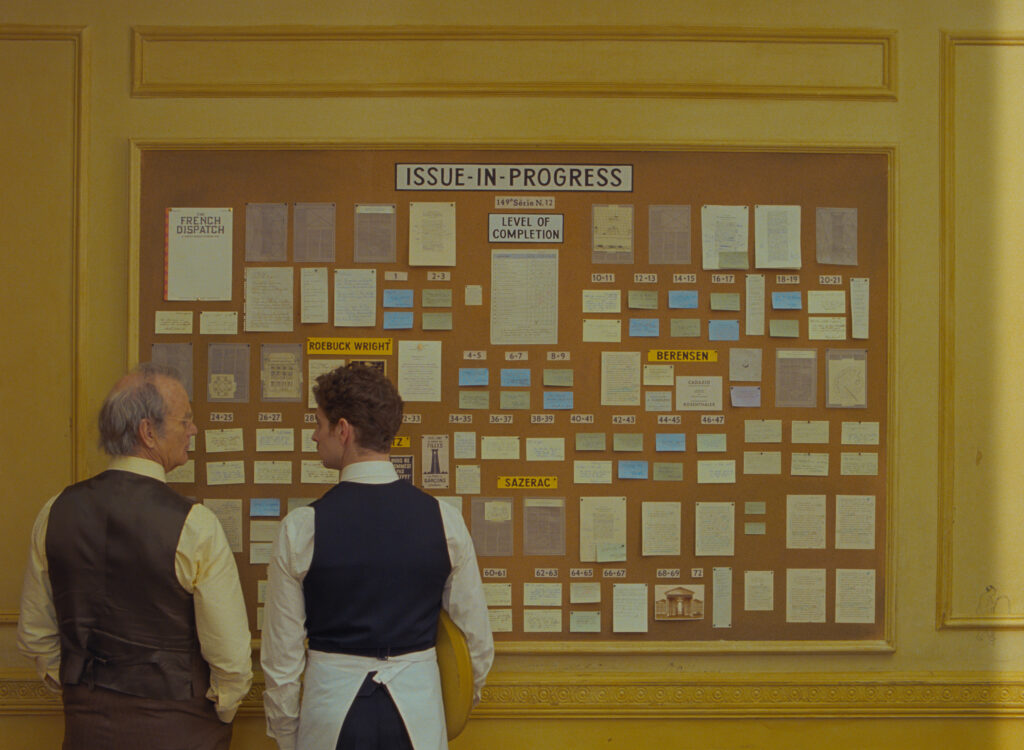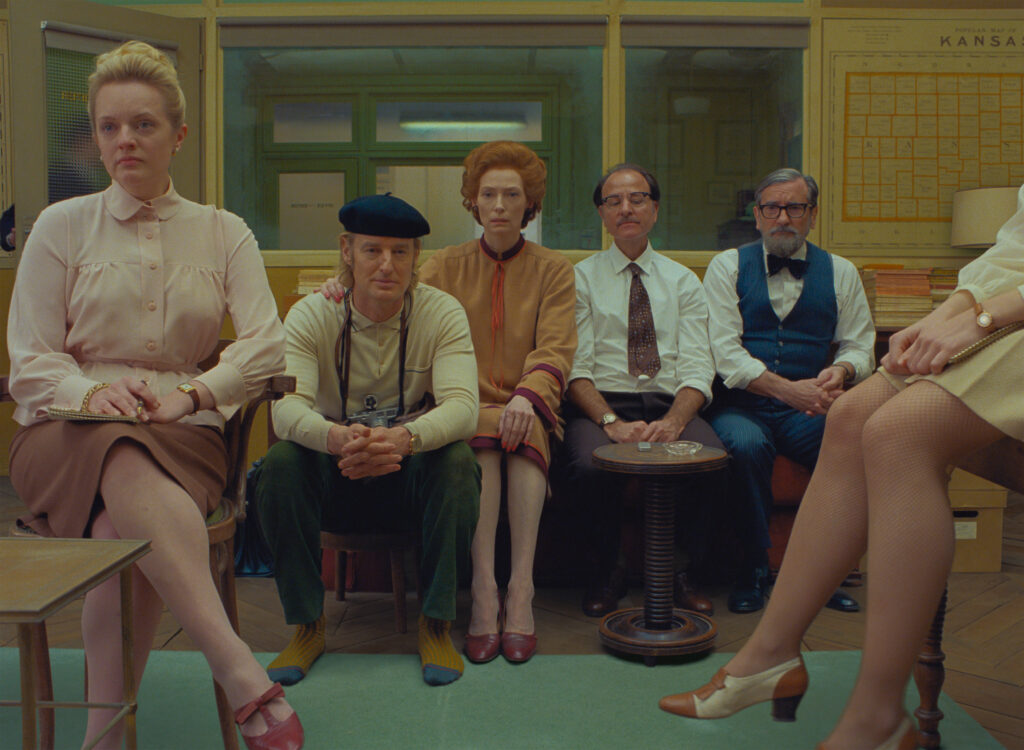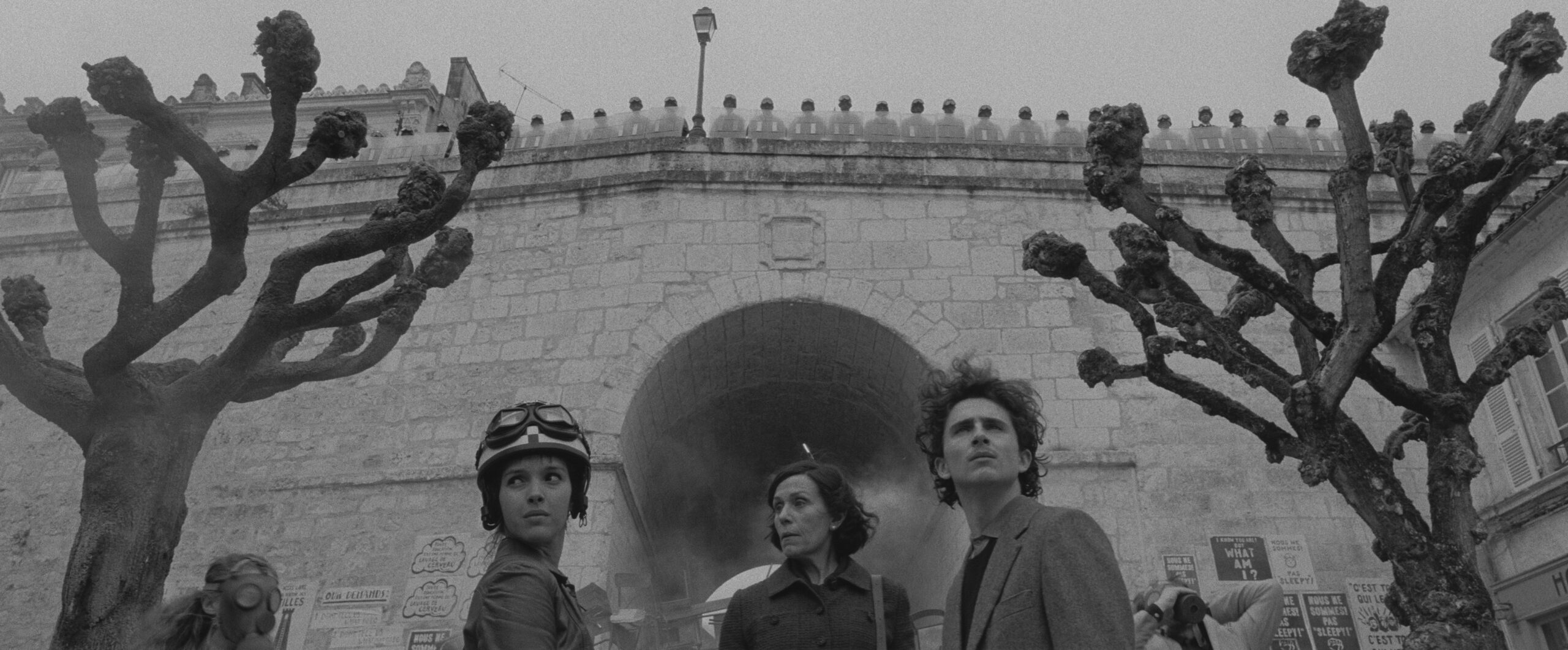To no one’s surprise, Wes Anderson’s latest is another visually stunning and intricate movie. But, like the rest of his best work, “The French Dispatch” does more than pass the eye test. There is true artistic soul here. It’s a funny, devastating, beautiful thing and the best movie I’ve seen in theaters this year.
The film follows a Kansas newspaper, which maintains a foreign office in France and publishes a magazine covering everything from art to politics to cuisine. After the editor (Bill Murray) dies, the paper’s final issue is published. It features a number of their past articles, each acting as a section of the movie, and an obituary for the editor.
If that sounds boring, it’s not. This is a wild motorcycle ride through all aspects of culture, high and low, with every possible tone and emotion you can think of.
All the usual Wes Anderson hallmarks are here. It’s another one of his worlds that seems totally handcrafted for you — at once familiar and fantastical. He delivers the laugh-out-loud humor and the gut-punch plot twists.

The film’s visuals manage to be the most versatile of Anderson’s career, and he takes time to experiment within his usual aesthetics. The film opts for an entirely black-and-white French New Wave look but drops into vibrant color without warning. Add in stop-motion gunfights, a fictional magazine cover gallery and animated sequences, and you have another visual highlight of Anderson’s collection. Like the stories featured in the magazine’s final issue, this is a “Best of” collage.
You might also notice how loaded that cast is. Luckily, this film doesn’t just have a stack of big actors, but a cast of great characters through and through.
Anderson’s usual favorite performers are present and accounted for. Many of them play the same character types they’ve played in past movies, but it’s still fun to have everyone back. The new additions are even more fun, with some playing against type or putting twists on their usual roles.
Timothée Chalamet gets to be young and naive, but he also reveals previously unknown comedic chops. The tortured artist played by Benicio del Toro manages to be wise, volatile and childlike all at the same time. Bill Murray is only in the movie for around five minutes, playing the usual easygoing, likable guy he always does, yet his presence hangs over the entire film in an interesting way. Each actor seems engaged, stirred to life by the chance to be in a unique project like this.
Fitting for a movie about journalism, the writing is crisp the whole way through. There’s a balance of humor, tragedy and wit that I haven’t seen since Anderson’s last masterpiece, “The Grand Budapest Hotel.” There’s also that thematic depth that elevates his best films.
At first, the stories don’t appear to have a unifying idea. There’s never any crossover between segments; it’s just three people who set out to write about subjects and in turn write about themselves. One of the writers is emotionally unstable, but writing the story gives her some peace. Another sees an element of himself in an unlikely artist. The third is content just being along for the ride. These three are perfect for the kind of New Journalism that Anderson clearly idolizes — which is to say they get too involved and leave parts of themselves in their pieces.

Some call Anderson’s movies “style over substance.” Watching this, I certainly saw style. Like the magazine, though, there are words to go along with the pictures, and they were very, very good.
As I watched, I asked myself how I look at art, politics and other people. I was strangely saddened by it but also uplifted by the experience. Like in the movie’s highlight segment, “The Concrete Masterpiece,” I was staring at a big painting, and I was happy to get something out of it.

